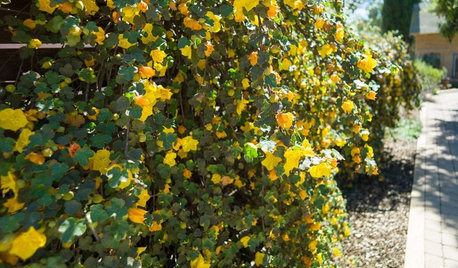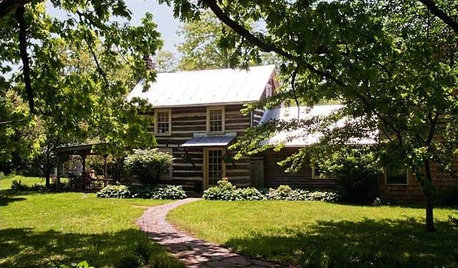Should I prune my pear tree?
orchidcrazy
15 years ago
Related Stories

EDIBLE GARDENSHow to Grow Your Own European and Asian Pears
Try these trees for their good looks, delicious fruit and wide range of sizes — plus you can espalier them
Full Story
GARDENING GUIDESTidy Up Sprawling Native Shrubs With These Pruning Tips
Sound horticultural pruning methods work for native and nonnative plants alike
Full Story
WINTER GARDENINGPruning Secrets for Exquisite Roses
Encourage gorgeous blooms year after year with this time-tested advice on how to prune your rosebush in winter for health and shape
Full Story
GARDENING GUIDESHow to Prune Your Flowering Shrubs for the Best Blooms
Less is often more when it comes to properly pruning flowering shrubs. Here’s what to do and why
Full Story
GARDENING GUIDESGot Frost-Damaged Plants? How It Happens, and When and How to Prune
Crispy brown leaves are a sure sign that Jack Frost has been to your neighborhood
Full Story
EDIBLE GARDENSWhy Grow Quince? For Beauty, Fragrance and Old-Time Flavor
Delightfully perfumed fruit and lovely spring blossoms make this apple and pear cousin worth a spot in the garden
Full Story
GARDENING AND LANDSCAPINGCrazy for Fruit Trees
Whether a single citrus or a mini apple orchard, even the smallest landscape space can bear deliriously delicious fruit
Full Story
FARM YOUR YARDIf You Have Room for Only One Fruit Tree ...
Juice up a small garden with one of these easier-care or worth-the-effort fruit trees for a mild climate
Full Story
LANDSCAPE DESIGNPretty Trees for Patios, Paths and Other Tight Spots
Choose trees for their size, shape and rate of growth — or shape them to fit your space. Here's how to get started
Full Story





fruitnut Z7 4500ft SW TX
orchidcrazyOriginal Author
Related Discussions
When should I prune my tree?
Q
Should i go ahead and put my newly grafted pear trees in the sun?
Q
Pruning my pear tree
Q
When should I bring my Meyer Lemon tree inside? And pruning?
Q
calistoga_al ca 15 usda 9
scaper_austin
orchidcrazyOriginal Author
geraldo_linux
bucky130
orchidcrazyOriginal Author
calistoga_al ca 15 usda 9
bucky130
orchidcrazyOriginal Author
alan haigh
orchidcrazyOriginal Author
boizeau
orchidcrazyOriginal Author
scaper_austin
Redthistle
orchidcrazyOriginal Author
calistoga_al ca 15 usda 9
scaper_austin